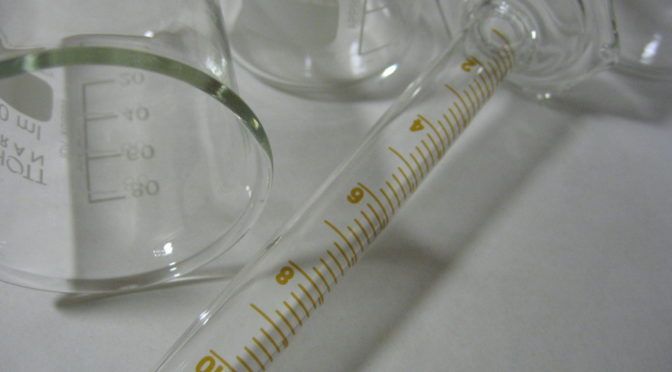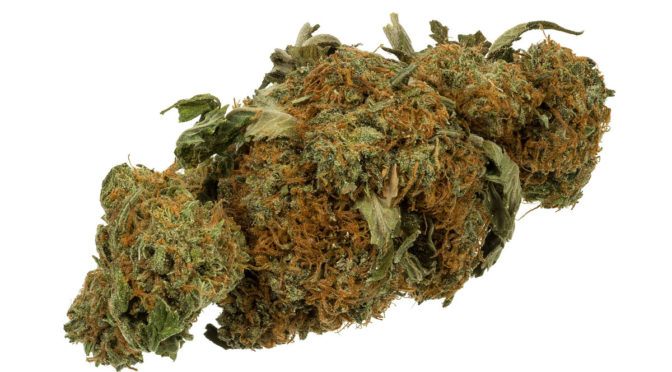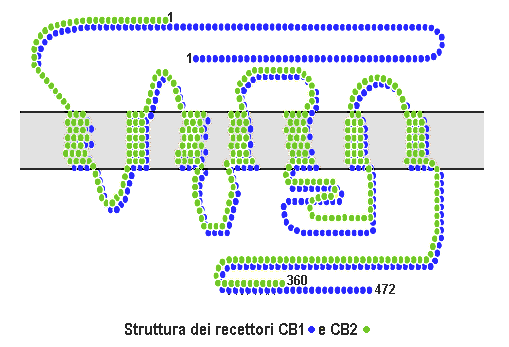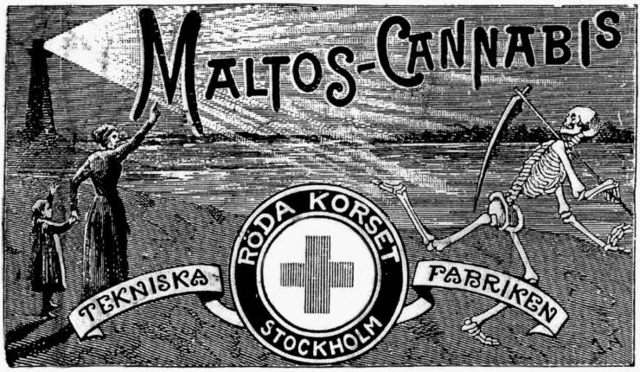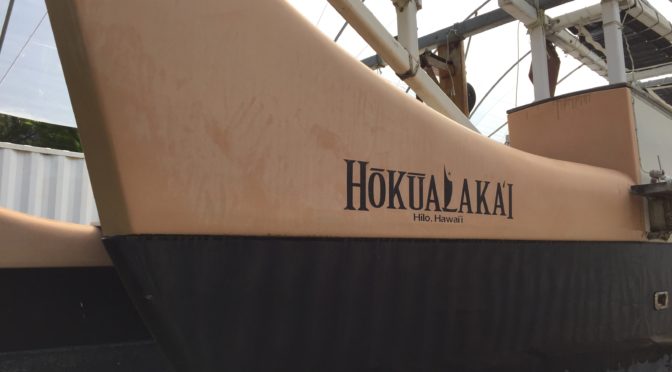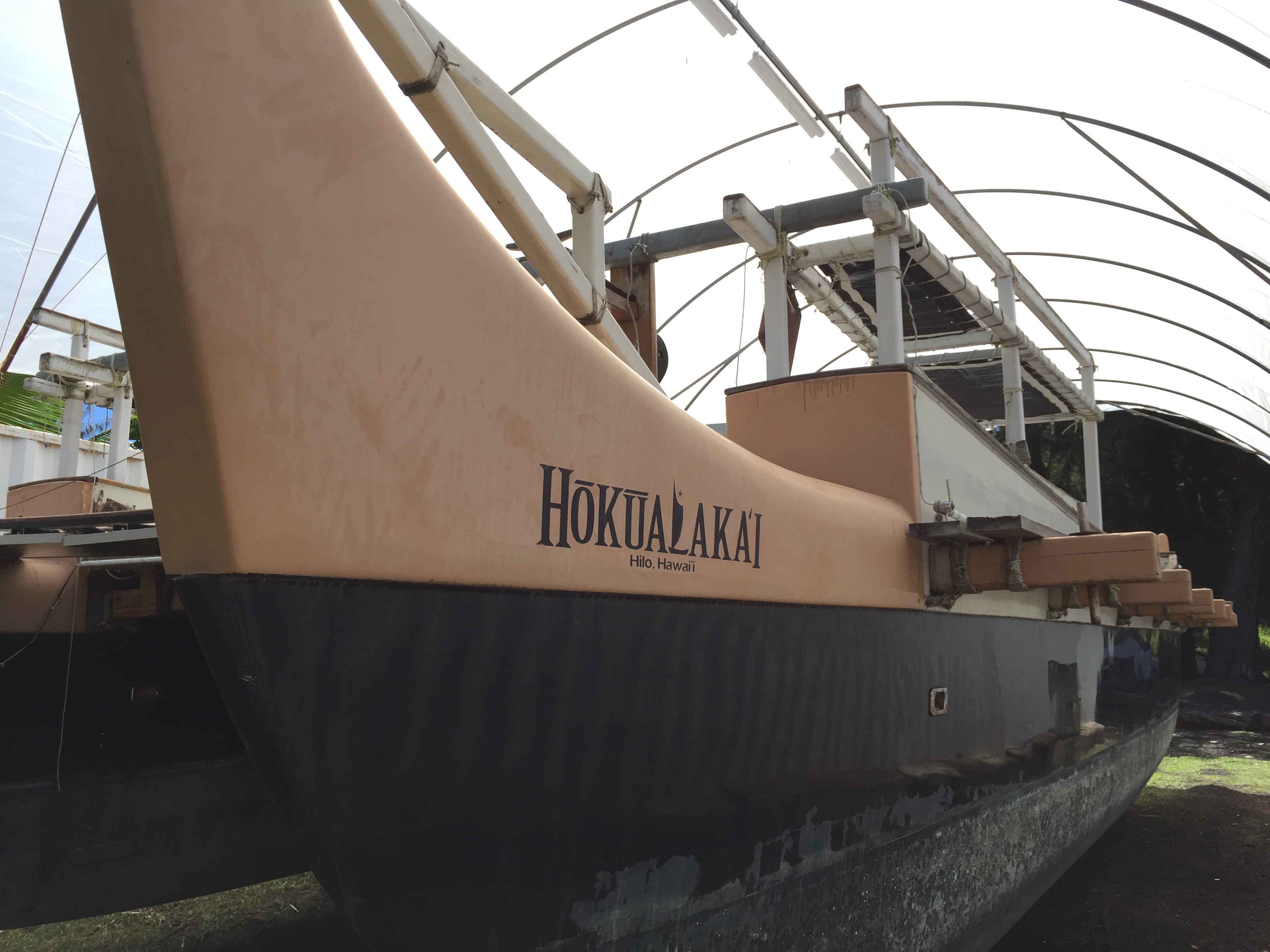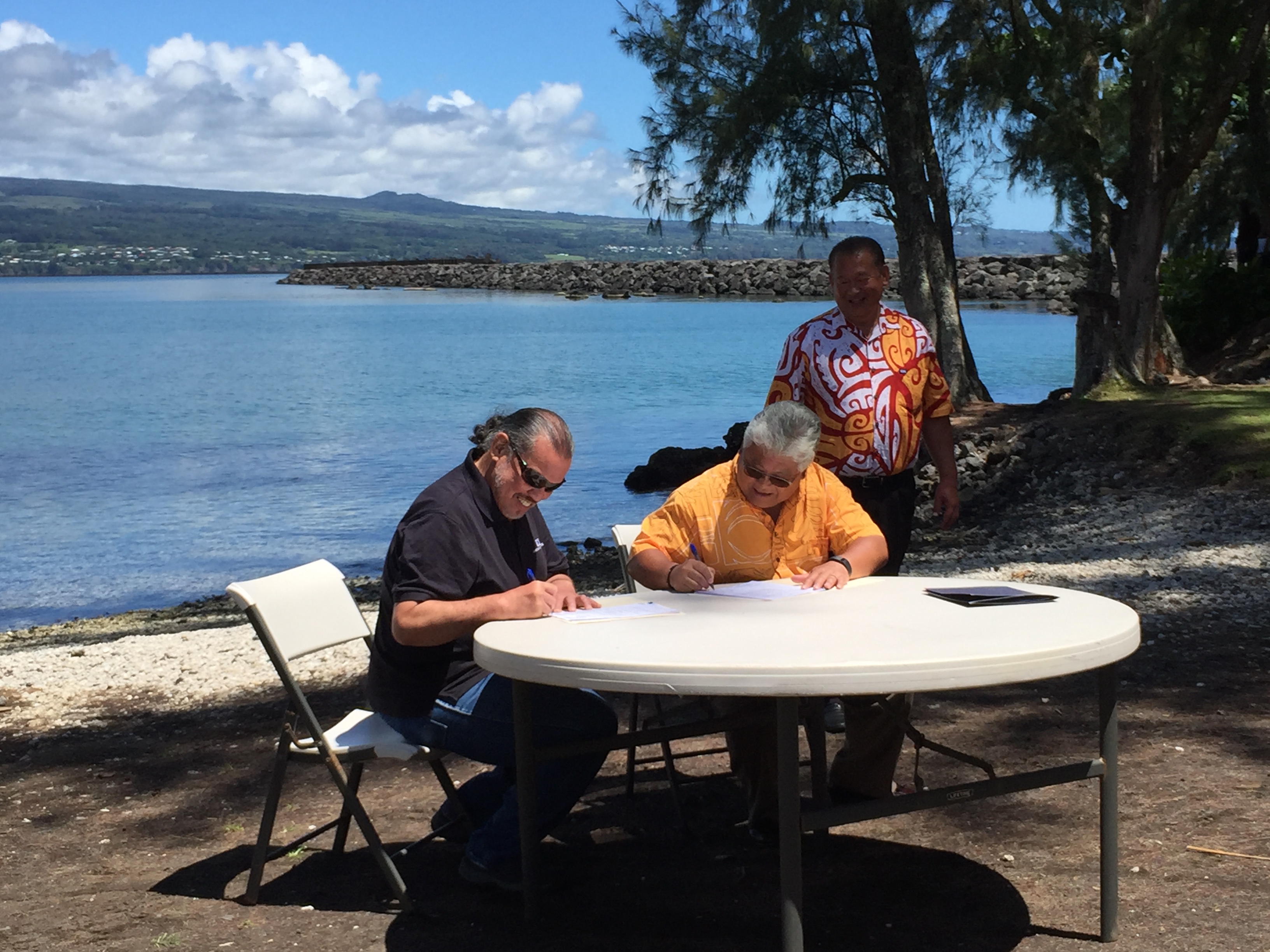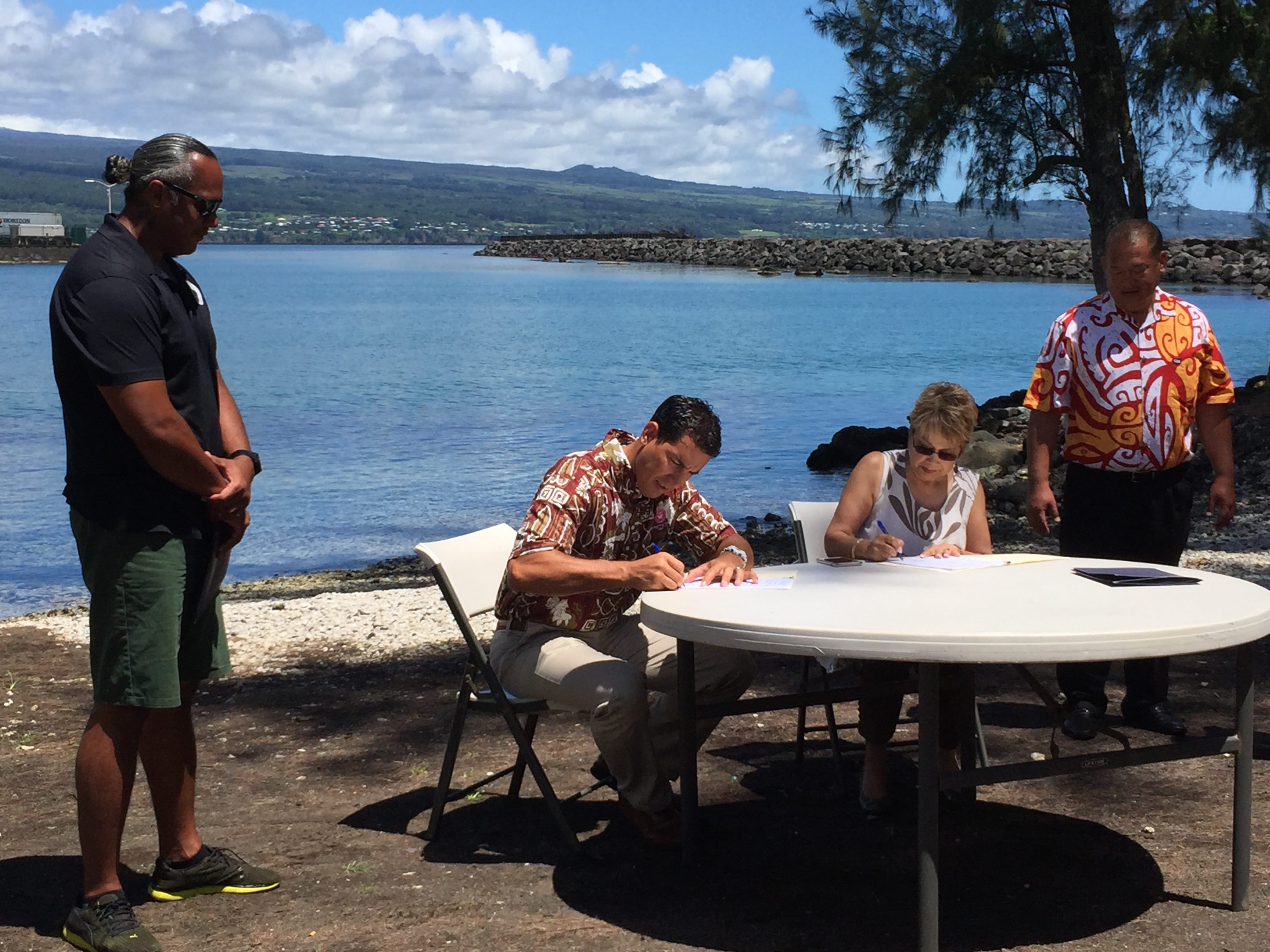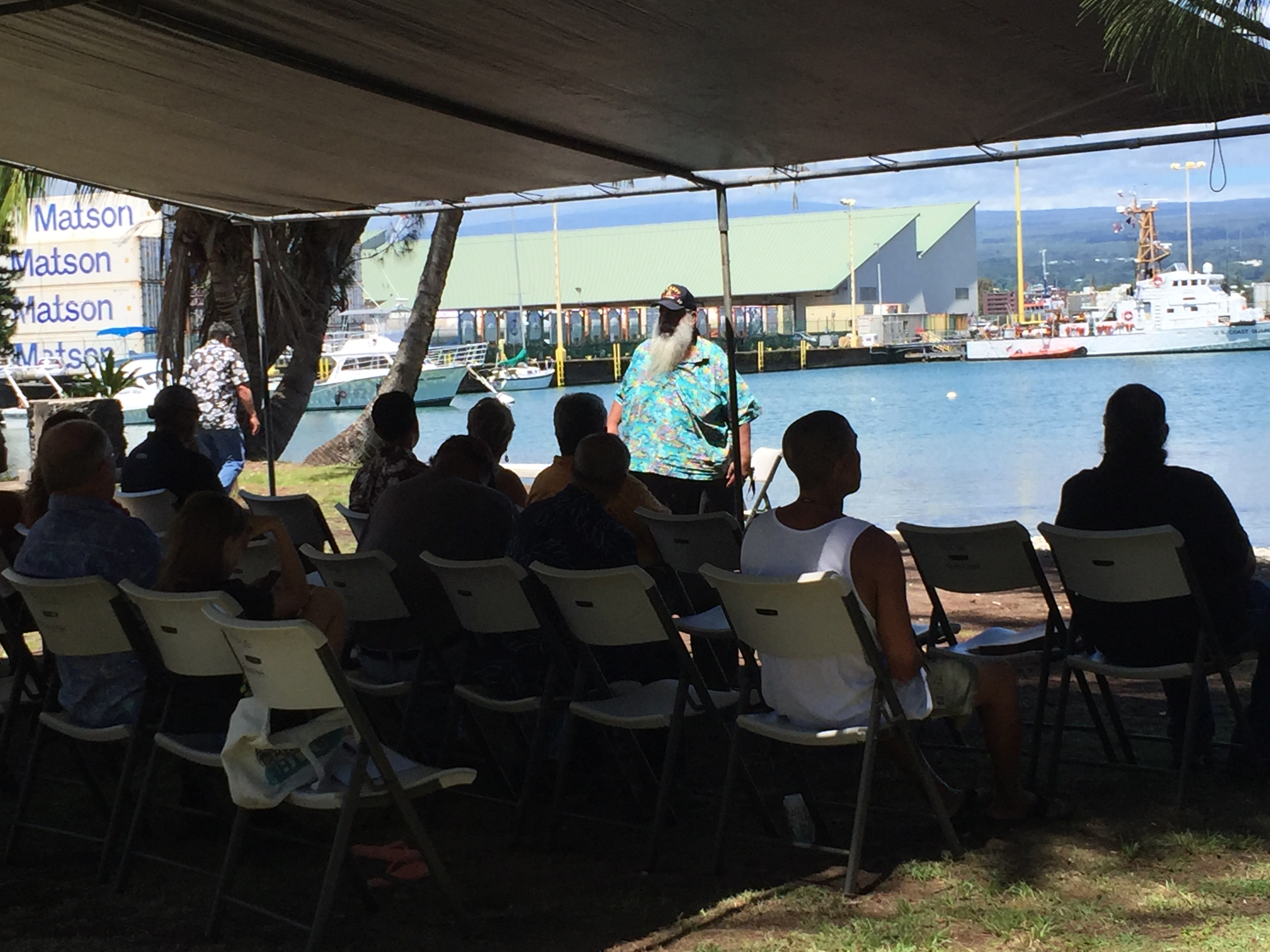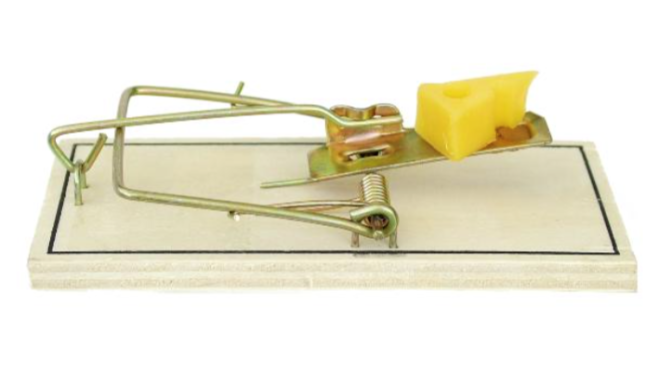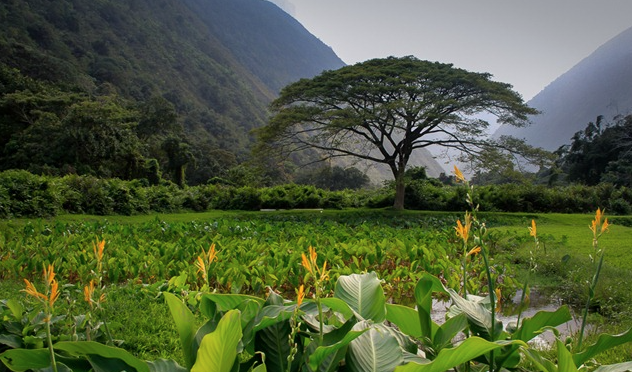Sometimes, here on the Big Island, we hear someone say this:
“The Big Island used to feed a population about this size by farming without the use of GMOs, pesticides, and other farming aids, and we can do it again.”
But could we? We examined this from several angles.
Dr. Bruce Mathews, interim dean of the University of Hawai‘i at Hilo’s College of Agriculture, Forestry and Natural Resources, says research shows that in pre-Western contact times, most Hawai‘i Island residents spent most of their days on activities related to agriculture. He says this would be a big shock if we tried to return to a subsistence type of lifestyle.
“I’ve seen a lot of times at the College of Agriculture where people want to spend a day in the field, doing agricultural things, and they end up saying, Gosh, I’ve never worked so hard in my life.”
“It sounds very, very challenging,” he says, “just in terms of the amount of labor to grow all that food without mechanization and without fertilizers. I don’t know how many people today really want to spend a lot of time on drudgery labor. Going in the forest to clear, digging holes, sticking mulch inside them, waiting awhile for everything to rot, and to transplant.”
He says it would be even more challenging these days, because now we have imported diseases, pests, and other invasives.
“I’m okay if people don’t want to use GMOs and chemicals, but I’d want to know who’s going to do all the labor,” he says. “Who’s going to pull all the weeds and control all the pests? Because if you’re going to do that naturally, you’re going to have to be out there every day spraying with natural products and pulling weeds all the time. I think it’s delusional, unless everybody’s going to only be involved with agriculture and there’s no other forms of livelihood.”
Jeff Melrose, who authored the Hawai‘i County Food Self-Sufficiency Baseline Study 2012, agrees about the tremendous amount of work it would entail.
“‘Back in the day,’ everybody played a part in the farming and feeding process,” he says. “We didn’t have students, we didn’t have scientists, we didn’t have retail workers; none of the specialization we have today.” He points out that means no one would have time to work in our hospitals; our ancestors kept sick people at home, wrapped in poultices, and they died much younger than people do today. “Everybody had to be involved in this process of feeding, catching, storing, preserving, whatever.”
“There are certainly some people today that aspire to be more self-reliant and live off the land, and fish and hunt, and do,” he says. “They also still go to town and do what they gotta do, and that’s fine. But it’s not for everybody.”
There’s also the practical matter that in pre-contact days, Hawaiians had a very different system of land use. “We have [private] land ownership now,” says Mathews, “and we don’t have a king mandating what people should do and grow. You don’t have a king to say, ‘This ahupua‘a shall be managed as one big contiguous unit.’”
Mathews points out that, initially, Hawaiians cultivated the most fertile Big Island valleys – Waipi‘o, Waimanu, and Pololu – and then when the population grew larger and they needed to feed more people, they needed other areas to cultivate.
They sought out “sweet spots” in terms of rainfall, which turn out to be places with about 50 to 60 inches of rain per year. This is enough that the soil is broken down and will have sufficient nutrients to sustain good crop growth, but not so much that it leeches the nutrients out of the soil. Much less rainfall than that, though, and the crops fail. This is what led them to develop the Kohala Field System. (In contrast, Kauai’s population never got that large, so that island never needed to develop its uplands and only farmed its valleys.)
“[Ecologist] Peter Vitousek did plenty of work looking at whether the Big Island’s [field] systems were really sustainable, and his work questioned that,” says Mathews. “Because when there were periods of drought the yields were low, and that put tremendous pressures on the population. Furthermore, when he looked at soil samples underneath the rock walls as compared to the former fields themselves, he found that despite all the best practices the native Hawaiians were using, be it fallows and mulching, etc., they were still depleting the soil fertility. So if Hawaiians hadn’t had contact with Western society, that would have really put a lot of pressure on those lands.”
Eventually, Mathews says, that system, too, would have broken down. Just as the population had outgrown its system of cultivating food in the valleys, they too were in the process of outgrowing their field system of agriculture. What would have happened next?
(As an aside, anthropologists tell us that in pre-contact times, you’d have to have good relationships with people that have food for when times of drought came or upland crops failed, or else be able to exert power for trading purposes. There’s evidence that this island had very severe droughts.
Some anthropologists think it makes sense, therefore, that the strongest political power – Kamehameha, the only chief to unite the islands – emerged on Hawai‘i Island. If you’re the leader of a place that’s under stress for food and security, you have to be tougher politically and militarily.)
Because we don’t have mineable sources of fertilizer on the Big Island, says Mathews, trying to farm without it would come down to trying to concentrate animal waste. And there’s science behind that.
“Generally in modern times people rely on organic methods, but they are usually robbing Peter to pay Paul,” he says. “You’ve got the organic farmer going down to a livestock enterprise and getting the manure and putting it in their garden, but those nutrients came from somewhere else. Eventually those systems where those nutrients are being captured, even if they rely on biological nitrogen fixation for nitrogen, they begin to collapse because they’re removing the phosphorous, the potassium and eventually the nitrogen fixation. Biologically, nitrogen fixation doesn’t work so well when the soil becomes depleted of phosphorus and potassium.”
“We could grow mulch crops like nitrogen-fixing trees,” he says, “and use them for mulches to release nitrogen and nutrients to the soil for the crops to grow in between them. But one of the dilemmas with that is that the microbes don’t always release the nutrients in synchrony with what the plant needs and when the plant needs it. And if you get a heavy rainfall, it just washes everything out and then you’re stuck. If you have fertilizer, you can go out there and correct it immediately.”
We have also diverted, changed and blocked many of the old waterways. “In many of those old ahupua‘a in the Kohala area, the water was diverted long ago and the streams and water conveyance systems have dried up,” he says. “It would take massive reengineering and restoration, and even then, there’s been some climate change. It would be challenging.”
Fishing made up a large part of the traditional, pre-Western diet. Could that work again on a large sale?
Not anytime soon, says Mathews. “When you talk to native Hawaiians and others who fish, a lot of our fisheries are overfished and depleted. The near-shore fisheries are really in bad shape. Everybody tells me they aren’t in anywhere near as good a shape as they were a hundred years ago.”
On a practical level, Melrose points out that our contact with the outside world has dramatically changed who we are.
“If you were to say, ‘Let’s just eat what we grow,’ well, we have a very seasonal and limited body of products that we grow,” he says. “I can just see your kid with his iPhone. ‘No, Mom, not ulu again.’ ‘Sweet potatoes, AGAIN?’ ‘Poi again?!’”
“We have evolved substantially into a much more discerning people,” he says. “You’d have to change fundamentally who everybody is.”
The bottom line, according to Mathews: Conditions have changed drastically since those pre-Western contact days, and if for some reason we were cut off from the U.S. Mainland, we’d have to eat a lot of wild pig and Parker Ranch cattle for awhile while we figured out what we were going to do.
“I think there’s a lot of romance in Hawai‘i,” he says. “A lot of Eden-like thinking that it was so good back then, back in the day.”
Mathews, who has children in high school, says he thinks it’s “a little bit tragic” that sustainability from an agricultural standpoint is not taught better in Hawai‘i’s school system. He sees a bias against new and modern technologies in general, and a general assumption that all new things are bad without evaluating them on a case-by-case basis.
“They really don’t get into how sustainable we are now and how sustainable it was in the past,” he says, “and I wish the schools would teach sustainability science with much deeper thought and understanding.
“I don’t like all new technologies,” he says, “but I think these blanket bans are not good.”
photo: CC BY-SA 3.0 AlaskaDave

